A Universal Item Guide
Sando
May 20, 2014
Introduction
Hello and welcome to the guide - it details all the major buildable items in the game and gives you specific information about when and why they're useful. While there are many guides to particular heroes that talk about items, they only give you part of the picture. I will also compare some items to similar ones to give you a better idea of how they stack up...
It's been a long job getting this guide together, and some items sit across several categories instead of sitting neatly in a single one - I hope the way I've organised things makes sense to most players. You can read chapter by chapter, or skip straight to specific items using the index below.
PLEASE NOTE, THIS GUIDE MAY STILL HAVE MINOR ERRORS - PLEASE POST ANY CORRECTIONS OR IDEAS FOR IMPROVEMENT IN THE COMMENTS
Any help or feedback is greatly appreciated...
Index
This section is designed to let you quickly skip to the relevant part of the guide, and allows us to categorise all of the items properly (some items really deserve mentions in several areas). Click on the (Go) link next to an item to skip straight to it!
Key
I've used the following colour scheme to make it easy to see some general information about items:
Ease of Building:
This describes how expensive an item is, but also how many large purchases you have to save up for in order to buy it. For example, a  Mjollnir and a
Mjollnir and a  Radiance are approximately the same price, but one requires a 3800 gold
Radiance are approximately the same price, but one requires a 3800 gold  Sacred Relic, while the most expensive item in the other is a 2100 gold
Sacred Relic, while the most expensive item in the other is a 2100 gold  Hyperstone - buying extremely expensive components is difficult as it relies on not dying, and going without the benefits of a partially completed item for longer.
Hyperstone - buying extremely expensive components is difficult as it relies on not dying, and going without the benefits of a partially completed item for longer.
Green = Easy to Build (it's cheap and the parts come in small installments)
Yellow = Fairly easy to Build (it's reasonably cheap OR the parts come in small installments)
Orange = Moderately hard to Build (it's expensive AND/OR the parts don't come in installments)
Red = Difficult to Build (it's expensive AND you have to save up large amounts of cash)
Game Stage:
Different items can be effective in different periods of the game, depending on how well they scale, or if they rely on having a strong right click already.
For example, you will almost never see a hero rush an item like a
 Heaven's Halberd
Heaven's Halberd - don't get me wrong, it's a great piece of kit - but with it's evasion and disarm abilities, it's an item that's made to reduce the right click attack of an enemy carry. In the early-mid game this simply hasn't grown big enough yet to be worth countering.
Alternatively, farming items like
 Hand of Midas
Hand of Midas need to be bought as soon as possible - the earlier and longer you have it, the more it pays off.
Green = Early Game
Yellow = Early to Mid Game
Orange = Mid Game
Red = Late Game
Pink = Any
Stacking and Duplication
Most items and abilities in DOTA 2 are setup so that they DO NOT stack or duplicate with themselves or similar powers. There are rare exceptions (such as  Faceless Void's Backtrack and
Faceless Void's Backtrack and  Butterfly evasion), but as a general rule you want to avoid this from happening.
Butterfly evasion), but as a general rule you want to avoid this from happening.
This means you generally want to:
- Avoid getting the same items on the same team.
- Avoid getting most items more than once.
- Avoid items which provide a very similar effect to one of your abilities.
Consumables
Consumable items are just that - you use them, and they're gone. They are heavily used at the start of the game when limited starting gold and proximity to enemy heroes means you need the ability to stay in lane.
From a pure efficiency point of view, consumable items look like poor value = a 100 gold  Healing Salve will heal you for 400 HP...then it's gone. Over the course of a game, a 350 gold
Healing Salve will heal you for 400 HP...then it's gone. Over the course of a game, a 350 gold  Ring of Regen could heal you for 1000s of HP...
Ring of Regen could heal you for 1000s of HP...
However, like most consumable items, the  Healing Salve offers you that healing over a much shorter amount of time, and in a time frame where you can't afford more expensive items.
Healing Salve offers you that healing over a much shorter amount of time, and in a time frame where you can't afford more expensive items.
Consumable Items

 Tango
Tangos are a useful laning item, allowing you to keep your health topped up, even while under harassment. They come in packs of 4, so you don't have to commit to using all of your healing at once, like you would with a
 Healing Salve
Healing Salve. However, they have a much slower healing rate.
Finally, tangos have some utility as an escape and vision mechanism - you can remove unwanted trees blocking ward vision, a
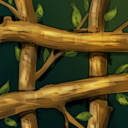 Sprout
Sprout, or to allow you to pull the radiant hard lane.

 Healing Salve
Healing Salve is another useful early game item, allowing a rapid burst heal of up to 400 HP. The big disadvantage of this is that any damage you take instantly ends the effect.
Usually you want to ensure you're safely out of attack range while using your precious salve, or it can even save you if you can juke out of sight briefly and activate it when being chased.
Generally in lane you want a mix of both
 Tango
Tango and
 Healing Salve
Healing Salve so that you can heal yourself for the appropriate amount - tangos keep you topped up and allow you to keep competing for last hits and denies, salves are for when your health is really low and you need to rapidly restore it.

 Clarity
Clarity potions are the only consumables that allow you to regain mana. Unfortunately they're slow and can be cancelled by any damage in the same way as
 Healing Salve
Healing Salve - you want to replace them with more reliable burst mana regeneration quickly, but until then you have to utilise them carefully and possibly be less active in the lane.

 Bottle
Bottle is an interesting item...not strictly a consumable but this is the best place I could find to put it!
Bottles are usually bought by mid players, ideally ones with some kind of mobility power that will help them get to the runes first. Good vision from
 Observer Ward
Observer Ward is a huge help to mid players trying to run a
 Bottle
Bottle - even covering one rune spawn means they know where it will be.
Bottles contain 3 consumable charges (each restoring a fair bit of health, and a small bit of mana) that take effect quickly, but can be cancelled like
 Healing Salve
Healing Salve. The Bottle Charges are refilled every time the bottle goes into a friendly fountain, or you collect a rune.
 Bottle
Bottle essentially allows you to buy all your regeneration consumables in one go. You can also pass it to friendly heroes for a swig, or even send back to base on the courier to refill. When in the fountain, you can continuously use the
 Bottle
Bottle to regen your pools faster - it will still be full when you leave.
Aside from the regeneration, the other major use of a bottle is the ability to store a rune for several minutes, allowing you to choose when to activate it.

 Town Portal Scroll
Town Portal Scrolls are probably the only consumable item that most heroes will continue buying all game -
 Boots of Travel
Boots of Travel allow you to pay all your travel up front, but they're expensive and many heroes need the utility of other types of boot instead.
Unless you have a rare hero who has their own long distance travel ability (and even then), you need TP scrolls to quickly get you where you need to go. They can also be useful for escaping from ganks (if the enemy hero lacks a stun or mini-stun ability).
TP Scrolls are vitally important and you should always carry one from the early game onwards - they're discussed in much more detail in
this guide.

 Observer Ward
Observer Ward are another vitally important utility item, providing vision in a large radius for their duration. Invisible to the enemy team, they allow you to spot incoming ganks, pushes and team fights. They can also be used to block neutral creep camps, monitor rune spawns, roshan attempts and plan ganks of your own.
In short, they're indispensible to any team worth their salt, and it's the job of support heroes to buy them. There's far too much to say in the limited space here, a much more detailed guide is
available here.



 Sentry Ward
Sentry Ward,
 Gem of True Sight
Gem of True Sight and
 Dust of Appearance
Dust of Appearance are all items that allow you to see invisible units, albeit in slightly different ways. It's the primary responsibility of support heroes to ensure these items are available when needed.
Again, they're worth far more discussion than can offered here, so check out
this guide if you want to know more.

 Smoke of Deceit
Smoke of Deceit is a consumable ganking and team fight tool. It makes anyone inside the initial radius both invisible and able to move faster (the smoke cast can actually be made by the
 Animal Courier
Animal Courier, just click to activate it!). However, you will be instantly revealed if you get close to an enemy player or tower. You also need to ensure you are not visible to the enemy team when you use it, otherwise you will remain visible to them.
Smoke is very useful for setting up ganks - unless they have Sentry Wards setup, they won't see you coming, especially if you can stay on the high ground when you are close and get 'revealed'. It's also very useful for setting up for team fights, and taking on Roshan quietly (again, normal wards won't spot you).
Smoke has a few extra uses - for example, if you're against a team with
 Zeus
Zeus on, if you smoke quickly when you're on low health, his ultimate will only reveal you instead of kill you.
Basic Stat Items
Usually bought in the early game, basic stat items are a very cost effective way of improving your damage and survivability. The trade off versus trying to rush more expensive items is whether you need the extra stats to survive and last hit in lane, or are basically freefarming anyway - if it's the latter then you can often skip them.
The general rule here is that you get the most stats per gold spent on items that cost the least - unfortunately this means they take up more inventory space. Basic stat items are a way of combining these items into a single slot.
 Bracer
Bracer
 Ease of Building: Easy
Ease of Building: Easy
Game Stage: Any
One of the most common stat items, the bracer is frequently picked up by support heroes. It's a cheap and effective way of bulking out your hitpoints and making it a little easier to last hit. It also builds into the far more useful
 Drum of Endurance
Drum of Endurance than the
 Wraith Band
Wraith Band or
 Null Talisman
Null Talisman.
 Bracers are an especially good choice for squishy heroes - especially against enemies with a lot of burst damage.
Bracers are an especially good choice for squishy heroes - especially against enemies with a lot of burst damage. If you can get your HP above their combo damage then that's usually enough to escape or at least get your spells off.
It's a worthwhile purchase at any point in the game when you have little cash and a desperate need for HP, but as a carry you should only be buying it early on, and usually on then to make it into
 Drum of Endurance
Drum of Endurance.
 Null Talisman
Null Talisman
 Ease of Building: Easy
Ease of Building: Easy
Game Stage: Early
Essentially the intelligence version of a
 Bracer
Bracer, the null offers a slightly different stat boost, and is also a bit cheaper. Generally you're only ever going to see this on intelligence heroes, and ones who are actually bothered about their right-click damage (i.e. not that many of them).
Usually this will be carries or solo mid heroes who will be actively competiting for last hits and need that extra damage early game.
 Null Talisman
Null Talisman builds into a Dagon, an item with a specific timeframe and usage (discussed further down this guide), but not one commonly built.
This makes it of limited value as the game progresses.
 Wraith Band
Wraith Band
 Ease of Building: Easy
Ease of Building: Easy
Game Stage: Early
Essentially the agility version of a
 Bracer
Bracer, the band offers a slightly different stat boost, and is also the cheapest of the 3 items. The agility boost is of very limited use to non-agility heroes as the armour and attack speed bonus is so small. However, the
 Wraith Band
Wraith Band can be built into the
 Ring of Aquila
Ring of Aquila, which offers some extra stats in a single inventory slot.
Generally this is favoured by agility heroes who also have some mana needs or very low base damage, like
 Broodmother
Broodmother or
 Mirana
Mirana. However, it can also work for support heroes who need to load on a few extra stats while keeping their inventory space clear for
 Observer Ward
Observer Ward and other utility items.
 Magic Wand
Magic Wand
 Ease of Building: Easy
Ease of Building: Easy
Game Stage: Early
This is such a universally good item that you may see it on every player in a match. It combines some cheap stats with the ability to store up burst heal and mana recharge - and can often be the difference between living or dying in a tight spot. The wand charges every time an enemy hero uses an ability within a fairly large radius, so ideally you want to start collecting these ASAP.
I find it helps to always have the wand in a specific inventory spot, so that you can press for that instant heal instinctively. Quite often this can be enough to turn a fight or save your life in the early game.
It's especially good against heroes who spam their abilities a lot in lane - e.g.
 Zeus
Zeus or
 Batrider
Batrider, as you can quickly build up a full set of charges.
This item gives you a way of combining your cheap Iron Branches (the most efficient stat item there is) into a single inventory slot with a
 Magic Stick
Magic Stick. However, the receipe costs 150 gold (adding only the ability to hold 5 more charges) so does decrease the overall efficiency quite substantially.
As the game progresses your health and mana pools will likely increase past the point where a
 Magic Wand
Magic Wand is much help, so sell it then if you need the space.
Interesting Basic Items
This section is a catch all for some of the more unusual early-mid game items that can be worth considering in particular situations. Many of these items are underrated, and offer potent ways of enhancing your hero or fixing a problem during the early to mid game.
I'm not going to cover basic components like  Slippers of Agility or
Slippers of Agility or  Band of Elvenskin as there's not a lot to say about them - they add stats and you buy them to make other items. The cheaper items are more cost effective, but less inventory efficient.
Band of Elvenskin as there's not a lot to say about them - they add stats and you buy them to make other items. The cheaper items are more cost effective, but less inventory efficient.
 Orb of Venom
Orb of Venom
 Ease of Building: Easy
Ease of Building: Easy
Game Stage: Early
A cheap and greatly underrated item, this orb gives any hero the option of a slow effect on their basic attacks. However, the slow effect is very weak on ranged heroes, so this
works best on melee gankers who need to chase down their prey.
The Orb also adds a small amount of damage over time to your attacks, which while pretty insignificant in itself,
can cause really problems for heroes with layered protection like  Templar Assassin and
Templar Assassin and  Visage
Visage.
Consider strongly if either of these two scenarios fit. Eventually this can be built into an
 Eye of Skadi
Eye of Skadi, but the relative costs are so different that it shouldn't really enter your thinking.
 Stout Shield
Stout Shield
 Ease of Building: Easy
Ease of Building: Easy
Game Stage: Early
A handy early game item for protecting you against harassment,
the effect is twice as strong on melee heroes. With a 60% chance of activating, early on this 20 damage block can effectively reduce incoming damage by about 30% - pretty useful when you have to get in close to take last hits and don't want to use up your consumables too quickly.
Obviously, as the game progresses this protection becomes less and less useful, and you need to consider upgrading to a
 Poor Man's Shield
Poor Man's Shield or a
 Vanguard
Vanguard to make that protection relevant for a little longer, or ditching it entirely.
Generally you pick this up when you know you're set for a lot of auto-attack harassment in lane, and know you will need to get in there and farm.
 Poor Man's Shield
Poor Man's Shield
 Ease of Building: Easy
Ease of Building: Easy
Game Stage: Early
A good way of combining up some stats and protection into a single inventory slot, this item also ensures that you will always block some incoming hero damage, even if it's not much. This is pretty much only for melee agility heroes, although occasionally you might see it on a long lane solo like
 Weaver
Weaver or
 Broodmother
Broodmother.
To be honest,
 Poor Man's Shield is something of a dead end item
Poor Man's Shield is something of a dead end item - you can't upgrade it, and while technically you can disassemble it, but there's nothing especially useful you can make out of the parts.
However, this doesn't make it useless - it's simply an item that you may need to do a job for you at a particular time -
let you get last hits and survive in a tough lane. Once you have the money for better items and need the space, sell it.
 Quelling Blade
Quelling Blade
 Ease of Building: Easy
Ease of Building: Easy
Game Stage: Any
An interesting and slightly maligned item, the  Quelling Blade is essentially a cheap farming item, with some intesting utility.
Quelling Blade is essentially a cheap farming item, with some intesting utility. First of all, the damage bonus only applies to non-hero units, and secondly is only really big enough to be worthwhile on melee heroes.
The third interesting thing is that the damage bonus scales with your hero - making this a useful item throughout the game, provided you're farming and not fighting.
So why is this item maligned? Well, a lot of people say it's for people who can't last hit effectively, and there's certainly an element of truth to this. Early game you can probably get the same damage buying a stats item that will offer you additional benefits. A
 Quelling Blade
Quelling Blade doesn't really boost your farm in lane if you can already last hit effectively, as there's still only a limited number of creeps.
However, if you do have tough opponents who are denying strongly, the extra damage can make all the difference.
The biggest point in favour I have for  Quelling Blade though is that it can massively increase your jungling speed
Quelling Blade though is that it can massively increase your jungling speed - you have to do all the attacking here, so 30% extra damage is massive.
The other utility of  Quelling Blade is that it allows you to cut through trees - very useful for clearing sight lines, funnelling jungle creeps or escaping from
Quelling Blade is that it allows you to cut through trees - very useful for clearing sight lines, funnelling jungle creeps or escaping from  Sprout
Sprout. This is why you will occasionally see support heroes with one.
 Urn of Shadows
Urn of Shadows
 Ease of Building: Fair
Ease of Building: Fair
Game Stage: Early
One of the more expensive items in this section, the Urn is usually seen on a strange collection of strength gankers and support heroes who otherwise rarely buy the same items. On the subject of buying the same item,
you generally want to avoid having more than one Urn on your team, and it's well worth mentioning in chat if you're going to buy it - this is because on only one Urn can collect nearby charges.
The primary use of the Urn is that it collects a charge whenever a nearby enemy hero dies (2 charges if it's currently empty).
These charges can be either be used to heal an ally, or nuke an enemy - although the healing effect is much bigger.
This gives gankers a little bit of extra chasing and damaging power that might just net them a kill - and therefore more charges. For support heroes, this allows them to dish out charges to heal their allies at a very low cost compared to a
 Mekansm
Mekansm - however, it's less reliable, single target and heals over time rather than as a burst, so you want a Mek too. The Urn is very useful before or after fights though.
Urn also gives some good survivability and mana regen stats, although it lacks the extra damage that a
 Bracer
Bracer gives to a non-strength hero.
 Medallion of Courage
Medallion of Courage
 Ease of Building: Fair
Ease of Building: Fair
Game Stage: Early-Mid
An unusual item, the Medallion offers a boost to armour and mana regeneration - a somewhat odd combination at this point in the game. However, it's active ability to remove some of your own, and a target's armour draws it all together.
Usually this item is used in such a way that the armour reduction is minimised from your side - e.g.
- You're jungling/doing Roshan and have minions tanking the damage for you (this lets you jungle faster)
- You're a right click ganker (e.g.
 Bounty Hunter
Bounty Hunter) chasing down a squishy support hero, they're not going to be auto-attacking back much.
It can also be used as a sacrificial gesture - for instance a support hero using it on a enemy carry as the fight starts, the support hero will probably die anyway, but it could well be worth it.
Medallion can also work well if many of you or your team's abilities do physical instead of magical damage, thus allowing the armour reduction to take effect.
 Ring of Basilius
Ring of Basilius
 Ease of Building: Easy
Ease of Building: Easy
Game Stage: Early
I remember being quite confused by the RoB when I first started playing DOTA. Surely +50% mana regeneration is better than +0.65? At it turns out,
0.65 is substantially better in the early game as you only get a piddling amount of regeneration from your intelligence then.
The other big advantage of RoB is that it offers an armour and mana regen aura to nearby allied units - very handy if you're jungling with minions. The issue during the early game though is that it tends to upset the balance of the lane -
you have to turn it off to stop your creeps enjoying an advantage and pushing on to the enemy tower too soon. Remember to turn it back on later in the game, especially when you're looking to push.
RoB is used by a variety of different heroes, mainly support, but sometimes other heroes who want decent mana regeneration, but don't want to buy
 Arcane Boots
Arcane Boots for whatever reason. It can also be upgraded into
 Ring of Aquila
Ring of Aquila, or
 Vladmir's Offering
Vladmir's Offering.
 Ring of Aquila
Ring of Aquila
 Ease of Building: Fair
Ease of Building: Fair
Game Stage: Early
An upgrade to the
 Ring of Basilius
Ring of Basilius, RoA is essentially the same thing with a
 Wraith Band
Wraith Band stuck on. You don't get any additional benefits or bonuses, but the whole item is extremely inventory efficient.
Generally it's favoured by agility heroes with some mana needs, but it can also be useful for intelligence heroes who need a space efficient item. Sometimes it's better to grab this instead of a
 Bracer
Bracer if your inventory is full of
 Dust of Appearance
Dust of Appearance,
 Sentry Ward
Sentry Wards and
 Town Portal Scroll
Town Portal Scrolls.
Later on, you may even think about disassembling it to make a
 Vladmir's Offering
Vladmir's Offering if it would be beneficial to your team.
 Soul Ring
Soul Ring
 Ease of Building: Fair
Ease of Building: Fair
Game Stage: Early
An interesting item for mana heavy heroes,
 Soul Ring allows them to effectively cast spells at a cost to their health instead of mana
Soul Ring allows them to effectively cast spells at a cost to their health instead of mana. It's handy in the early game when you might need emergency mana, but it can also cost you unnecessary deaths if used incorrectly.
When activated, SR immediately takes 150 health from you, but gives you 150 "temporary" mana for the next 10 seconds - this can be in excess of your usual mana pool limit. Any spell you can cast in the next 10 seconds will come from that temporary pool first. It offers some passive health and mana regeneration to soften this a little.
 Soul Ring
Soul Ring is particular interesting for heroes with healing or heal/nuke types spell (such as
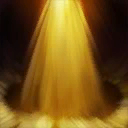 Purification
Purification and
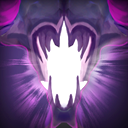 Brain Sap
Brain Sap), as this can effectively pass the health cost on to an enemy hero...
Boots
Boots are essential for pretty much all heroes in DOTA - speed often being the difference between escaping, getting caught or getting the kill. There are several types of boot available, with many heroes suiting more than one - depending on the playstyle you choose.
 Boots of Speed
Boots of Speed
 Ease of Building: Easy
Ease of Building: Easy
Game Stage: Early
Your bog standard boots, offering up a good movement boost at fairly minimal cost. There's never really a reason not to get at least basic boots - even if it's then a long time before you upgrade them.
While you usually need to ensure you have sufficient stats and consumables to survive in lane, boots are usually the first item on your shopping list after that. Even hard support players need to put aside some cash for these once their
 Observer Ward
Observer Ward and
 Animal Courier
Animal Courier/
 Flying Courier
Flying Courier upgrades are sorted, or risk becoming feed-fodder.
 Arcane Boots
Arcane Boots
 Ease of Building: Fair
Ease of Building: Fair
Game Stage: Early-Mid
Mana boots are generally considered a team item bought by intelligence support heroes, although many gankers (like
 Tiny
Tiny) also need them to expand and restore their mana pool.
 Arcane Boots
Arcane Boots are a great help when your team mates have limited mana, but rely on their abilities to really be effective - for example
 Lifestealer
Lifestealer. As a carry he doesn't want to be buying anything but
 Power Treads
Power Treads, so that bit of shared mana recovery can really help him.
As they offer no stats or damage at all, arcanes are unsuitable for most carries.
 Power Treads
Power Treads
 Ease of Building: Fair
Ease of Building: Fair
Game Stage: Early-Mid
The default choice for most carries, as they offer both a stat boost and an increase in attack speed. Being able to switch the stat boost is also very handy for many heroes - for example, heroes like
 Sven
Sven or Skeleton King would usually keep it on strength, but might just need that extra bit of mana to enable them to use their respective stuns in a tight spot.
While you'll usually keep the stat boost matched to your primary stat while farming, most players change to strength while in team fights to boost their survivability.
 Phase Boots
Phase Boots
 Ease of Building: Fair
Ease of Building: Fair
Game Stage: Early-Mid
The shoes of choice for gankers,
 Phase Boots
Phase Boots offer increased damage and the chance to move quickly through the crowds. They're superior to
 Power Treads
Power Treads in a straight fight for farm/denies, but often that stage of the game will be ending as these begin to come online.
The active phase ability is usually
the difference between getting that extra hit that secures the kill, or avoiding the same fate - this is especially true when trying to retreat through a crowd of creeps, those tiny blocks can make all the difference.
 Phase Boots
Phase Boots work well for heroes who want to stack raw damage rather than stats to fuel a particular ability - e.g.
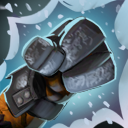 Walrus Punch
Walrus Punch, and those that have a higher than average movement speed, and want to accentuate that further.
 Tranquil Boots
Tranquil Boots
 Ease of Building: Easy
Ease of Building: Easy
Game Stage: Early-Mid
The cheapest pair of boots available that have stats and utility attached,
 Tranquil Boots
Tranquil Boots are useful and great value for money.
They offer good protection, high movement speed and also regenerate your health, either passively or actively.
So, what's not to like? Well the problem is that
if you take more than a few attacks within a short duration, the boots break and you lose a massive chunk of movement speed, and the other extra effects - they do recover shortly afterwards, but it means you lose all the good stuff when you really need it.
 Tranquil Boots
Tranquil Boots are generally favoured by tanks who take a lot of punishment, and support heroes who already have some way of restoring their mana (and hence don't need
 Arcane Boots
Arcane Boots). They also work well on some hard carries who can use them in the difficult laning phase, before trading up to something else later on.
 Boots of Travel
Boots of Travel
 Ease of Building: Moderate
Ease of Building: Moderate
Game Stage: Late
Tired of buying
 Town Portal Scroll
Town Portal Scroll? Well, BoT are for you! While it would be possible to make an arguement that these could save you money in the long run, you'd need to burn through at least 15 TP scrolls before you got your money's worth.
The really big advantage of BoT is that they give you the highest movement speed or any boots, and that you can TP onto creeps as well as buildings - useful in the late game when towers are likely down and you might want to quickly reach the other side of the map.
Generally BoT are only bought by most heroes in the late game, when the rest of their equipment provides so many stats that a few extra from other boots makes little difference. One exception is
 Tinker
Tinker, who can really abuse BoT with his
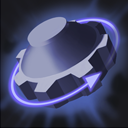 Rearm
Rearm skill.
Mobility and Escape
These items all offer ways for your hero to rapidly change their position over a short distance. This has all sorts of uses, from pushing lanes to initiating or escaping.
Some heroes already have potent escapes and mobility spells, in which case they rarely need these items. However, the majority do not. These items are most important for heroes who's spells depend on positioning to utilise their full potential.
 Blink Dagger
Blink Dagger
 Ease of Building: Fair
Ease of Building: Fair
Game Stage: Any
In many ways,
 Blink Dagger
Blink Dagger is the ultimate mobility tool -
it has a range and precision that the other items lack. This is what makes it such a popular tool for initiators - you can get to exactly where you need to be to unleash maximum devastation in the middle of a team.
Some things to note however - first of all, if you click to blink beyond the maximum range of the dagger, you end up losing about 20% of the possible range, so you may well want to play about with it for a while to figure this out, or set up a radius ring in the console to help you.
Secondly, the cooldown on blink is reset for 3 seconds every time you are attacked by an enemy player or their minion. This can be decisive in letting you escape or initiate properly - generally stay out of sight or use an ability that lets you remain unharmed for 3 seconds (e.g. Eul's Cyclone,
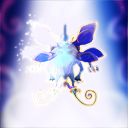 Phase Shift
Phase Shift, etc). Damage over Time (DoT) abilities can be a problem here.
Get to know the map layout and figure out the best spots to initiate from in particular situations. In the same way, get to know good escape routes - generally you want to try to save your blink for moving across impassable terrain and/or when out of sight to make you as difficult to pursue as possible.
 Force Staff
Force Staff
 Ease of Building: Fair
Ease of Building: Fair
Game Stage: Any
Although lacking the distance or precision of Blink,
 Force Staff
Force Staff does have advantages of it's own:
-
It comes with some stats - although they most suit intelligence heroes.
-
The active ability can be used on ANY target - yourself, allies or enemies. This means you can use it to get allies out of trouble, or catch out an enemy who's slightly out of position.
-
The cooldown isn't reset by enemy attacks - so it's a more reliable escape than blink.
Again, you want to aim to use it to escape over impassable terrain where possible, as the distance alone isn't necessarily enough to get you away from faster heroes. The ability to target any unit with force staff is the real key to it's usage, there are so many ways this can be useful - be creative!
 Shadow Blade
Shadow Blade
 Ease of Building: Moderate
Ease of Building: Moderate
Game Stage: Early-Mid
A much maligned item, SB generally becomes less and less useful as you move up the skill brackets and/or into more organised teams. This doesn't make it useless however, you just have to pick the right situations and remember that
invisible and
invincible are NOT the same thing!
 Shadow Blade
Shadow Blade is useful as both an escape, and a ganking tool. Not only does it make you invisible, but you move 20% faster, and get a free 150 bonus damage if you become visible by auto-attacking. This is a good stack of damage in the early-mid game. It also gives you a nice damage and attack speed boost, although it's not really enough to cover the cost on it's own.
The escape is much less reliable - the 20% movement boost certainly helps, but any team worth their salt will have some invisibility detection after the first time they spot it. Good positioning, judgement and map awareness are still very important - spot the incoming gank, and use your
 Shadow Blade
Shadow Blade to leave the area before they arrive, this does make you much harder to kill.
The big no-no when it comes to buying a
 Shadow Blade
Shadow Blade is if your team already has invisible heroes - the enemy team will almost certainly have detection already bought, and this might well be enough to persuade them to load up on the stuff, and probably buy a
 Gem of True Sight
Gem of True Sight too.
Debuff and Disable
This is a very set of items that all share one thing in common - they have an active ability which allows them to silence, stun, slow or disarm an enemy hero.
All of them also offer some kind of additional benefit or stats which is usually the key in deciding which one is most appropriate for you.
Generally you pick up these items when your team or hero cannot prevent enemy heroes from escaping fights and ganks, although having more full or partial disables available is never a bad thing.
 Skull Basher
Skull Basher
 Ease of Building: Moderate
Ease of Building: Moderate
Game Stage: Mid / Late
Greatly preferred by melee carry heroes due to the much greater chance of stun, this item is very useful for allowing them to turn ganks into kills, and increasing their team fight presence.
SB does rely on the hero having a reasonably good attack speed however, as otherwise it will not proc reliably - this is why it's bought later in the game, usually after at least one other item that increases attack speed in some way.
SB does NOT stack with most passive % stun type abilities, and also cannot proc more than once every 2 seconds (unlike skills such as
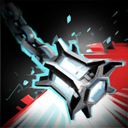 Greater Bash
Greater Bash). If the game goes very late, and you've completed all your other major items - you'll usually upgrade it to
 Abyssal Blade
Abyssal Blade, but this is not a high priority.
 Abyssal Blade
Abyssal Blade
 Ease of Building: Hard
Ease of Building: Hard
Game Stage: Late
The upgraded version of the
 Skull Basher
Skull Basher offers several improvements, but is also the most expensive item in the game. While the bash passive essentially remains the same, you now can choose to activate it when required, with a 60 second cooldown - this brings an element of reliability to it. The other advantage is obvious - you get a lot of extra raw damage.
Personally I'm not entirely sold on the
 Abyssal Blade
Abyssal Blade - it's fantastically expensive, and I'd only ever get it as the icing on the cake of a 'finished build' rather than an integral part of it. Don't skimp on other essential items (the upgrade is about the same price as a
 Black King Bar
Black King Bar, for example) in order to get this.
 Heaven's Halberd
Heaven's Halberd
 Ease of Building: Moderate
Ease of Building: Moderate
Game Stage: Late
The halberd is an extremely useful piece of kit, mostly a counter to out of control hard carries, and a way for strength carries to stay competitive with agility ones as the game goes late.
The evasion, maim and disarm all increase your chances of going head to head with another carry and coming out on top. You might even consider it on a reasonably well farmed support hero if that's what the team needs.
Although you could build it earlier, there's no real point in rushing this item as it's effectiveness only really shines once an enemy carry has got big.
The evasion is countered by
 Monkey King Bar
Monkey King Bar, but you can still disarm somebody using it.
 Eul's Scepter of Divinity
Eul's Scepter of Divinity
 Ease of Building: Fair
Ease of Building: Fair
Game Stage: Any
A useful item at any point in the game, Eul's is primarily an item for support heroes. It offers a lot of mana regeneration, intelligence and some bonus movement speed. However, it's most important characteristic is that it can "remove" ANY unit temporarily from the battlefield - they float up on a cyclone of air for 2.5 seconds and cannot do anything or be harmed in any way.
This has a variety of uses - most obviously temporarily stopping an enemy hero from attacking, chasing or casting. However, it can also be used for ganking, positioning spells and escaping.
For example, it works very well with unreliable stuns like
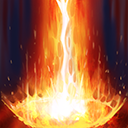 Light Strike Array
Light Strike Array or
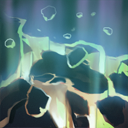 Split Earth
Split Earth - if you set them up with a cyclone, you can land them consistently. Or you could make a
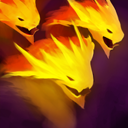 Mass Serpent Ward
Mass Serpent Ward trap underneath them so they land right in the middle.
Eul's works well on any hero who has these kinds of abilities which are difficult to land, or when your team is in need of extra disables to manage heroes like
 Ursa
Ursa or
 Lifestealer
Lifestealer during team fights.
 Scythe of Vyse
Scythe of Vyse
 Ease of Building: Hard
Ease of Building: Hard
Game Stage: Any
In the opinion of many players, this is the best item in the game. It gives you the ability to
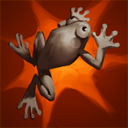 Hex
Hex an enemy player, effectively disabling them and making them vulnerable for it's duration. A hex'd player can still move a little, but loses all the benefits of their skills and resistances - making them much easier to kill.
Unfortunately a "sheepstick" is a pretty expensive investment for any player, and should generally be avoided by non-intelligence carries unless they really need one, and nobody else on the team can afford it.
It offers a good set of stats on top of the hex, especially for intelligence carries who will enjoy the bonus damage, but is also a great item for any supports who can afford it.
If your team lacks disabling power and is up against mobile heroes like
 Storm Spirit
Storm Spirit,
 Anti-Mage
Anti-Mage or
 Weaver
Weaver then this should be your first port of call.
 Orchid Malevolence
Orchid Malevolence
 Ease of Building: Moderate
Ease of Building: Moderate
Game Stage: Any
A cheaper version of a sheepstick, an Orchid offers a silence and increased damage instead. This is a great ganking tool, much loved by heroes such as
 Clinkz
Clinkz and
 Broodmother
Broodmother who can appear unexpectedly and kill you off before you can react.
The silence does benefit greatly though if you can provide a slow of some kind to stop the target getting away too quickly, but at least it stops mobility heroes from using their escape.
It offers more flat out damage stats than the sheepstick, but no general stats to bulk out your hero.
The decision whether to go Orchid or Sheepstick is very open - neither is a bad choice, and both can do a good job of helping you gank, especially against heroes with escapes. However, the big advantage of Sheepstick is that the enemy can't right click while under it's influence.
 Rod of Atos
Rod of Atos
 Ease of Building: Moderate
Ease of Building: Moderate
Game Stage: Early-Mid
This item is a bit of a paper tiger - it's excellent in theory, but doesn't always quite deliver in practice. For the price of the raw items, you get a bonus 75 HP and 5 intelligence, as well as an active 60% slow - what's not to like?
While great value, the
 Rod of Atos
Rod of Atos usually leaves you wishing you'd saved up a bit more and gone with an
 Orchid Malevolence
Orchid Malevolence or
 Scythe of Vyse
Scythe of Vyse instead - their actives are much more effective on the whole.
However, you shouldn't write off this item completely - it offers a nice mixture of HP and intelligence that's difficult to find, and particularly suits heroes like
 Silencer
Silencer and Outworld Devourer - upping their firepower, making them tankier, and also giving them a way to pick off heroes that they lacked before.
Usually you want to get it as early as possible, before heroes start getting the magic immunity and mobility items that can make this ineffective.
Team Utility
All of these diverse items offer ways of helping your team by providing bonuses or effects which they share the benefits of. For obvious reasons they are mostly carried by support heroes, but a lot of them can also be very potent for semi-carries.
DOTA is a team game and you should always consider how your item choices effect the team as a whole - even "selfish" carries are ultimately playing for the team by maximising their damage and survivability. There's a fair argument that a good team will carry several of the items listed here between them.
 Drum of Endurance
Drum of Endurance
 Ease of Building: Fair
Ease of Building: Fair
Game Stage: Early-Mid
An upgrade to the
 Bracer
Bracer, Drum is a very solid stats item which also provides a movement and attack speed aura to nearby allies. The active ability doubles this bonus to +10%/10, but can only be used four times - you can buy another receipe to reset this, but it's incredibly poor value at 750 gold.
Stats aside, the real attraction of  Drum of Endurance is the movement speed boost
Drum of Endurance is the movement speed boost - 5% might not seem a lot, but it can be vital in chases and escapes. The ability to boost this to 10% in important situations is also very helpful.
Drum suits a wide variety of heroes - squishy supports who bought a
 Bracer
Bracer and want to use their inventory efficiently to provide some team utility, to carry/gankers like
 Chaos Knight
Chaos Knight who enjoy the stats and extra chasing ability.
Multiple Drum auras don't stack, so you don't ideally want lots of them on a team, but this remains a very solid item choice.
 Mekansm
Mekansm
 Ease of Building: Fair
Ease of Building: Fair
Game Stage: Early-Mid
Simply one of the best utility items out there,
 Mekansm provides vital auras and burst healing for team fights
Mekansm provides vital auras and burst healing for team fights, as well as improved survivability for the carrier. The aura is most useful for pushes as it slowly heals your creep wave, although allied heroes also benefit.
The real utility of
 Mekansm
Mekansm is in early-midgame team fights (the 250 HP burst heal loses some impact later on), and used correctly can swing the result decisively in your favour. As the Mek carrier it's your job to try stay in the middle of your team, but also reasonably safe - use the active when one of you is in serious danger of dying, generally this will be at a point where everyone has taken some damage - this will also kick in the armour bonus for the rest of the fight.
 Mekansm
Mekansm has a reasonable mana cost attached, so is usually carried by intelligence supports.
You should generally ensure your team has exactly ONE  Mekansm
Mekansm, as a second one cannot be used within 25 seconds of the first to any real effect. If the game passes 30-40 minutes, it's generally considered too late to buy one.
 Necronomicon
Necronomicon
 Ease of Building: Hard
Ease of Building: Hard
Game Stage: Any
An item that gets more and more use as you move up the skill brackets,
 Necronomicon
Necronomicon is a great stats and utility item - for the right heroes and/or situations. Although the initial item is only 2700 gold, I've listed this as "
Hard", as you generally want to get it to level 3, at a cost of 5200.
Why level 3? The primary reason is that at this point,
the summonable minions gain True Sight - making this a very strong counter to Invisible heroes and
 Shadow Blade
Shadow Blade carriers.
 Gem of True Sight
Gem of True Sight has more utility, but can be lost or stolen easily.
The summonable minions are also much stronger as you level them up - and considering they each have a 100 gold bounty attached, you want to make them as strong as possible.
Necrobook suits a variety of heroes - mostly strength pushers and intelligence based disablers. They add considerable ballast and damage to a lane push (for heroes with auras like
 Beastmaster
Beastmaster and Lycanthrope especially), and can work over enemies while you disable them with the likes of
 Bane
Bane or
 Shadow Shaman
Shadow Shaman.
It also offers a nice increase in strength and intelligence, boosting your damage, health and mana pool.
 Hood of Defiance
Hood of Defiance
 Ease of Building: Fair
Ease of Building: Fair
Game Stage: Any
Hood is an item that generally suits tanky heroes who want to soak up enemy damage, and have enough HP to make all that regeneration worthwhile. It greatly improves your magic resistance, so is very useful against teams who pack a lot of magic damage.
Hood is most favoured by heroes who's abilities damage themselves as well as the enemy - e.g.
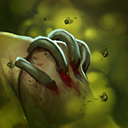 Rot
Rot or
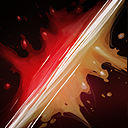 Double Edge
Double Edge. The hood reduces the damage you take from your own spells too!
One of my personal annoyances is heroes who buy a
 Hood of Defiance
Hood of Defiance, but then don't go on to make it into a
 Pipe of Insight
Pipe of Insight. Sure, it is a reasonable amount more cash, but most teams will really benefit from the group protection, and you're being selfish by not completing it.
 Pipe of Insight
Pipe of Insight
 Ease of Building: Moderate
Ease of Building: Moderate
Game Stage: Any
An upgrade to
 Hood of Defiance
Hood of Defiance, Pipe makes it into a team utility item.
It's active offers a shield to all nearby allied units that can absorb up to 400 magic damage, for up to 10 seconds. The shield takes all the damage first, stopping it reaching your health pool at all - at least until it expires.
This is incredibly useful against big team fight ultimates like 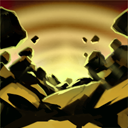 Epicenter and
Epicenter and 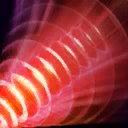 Sonic Wave
Sonic Wave - and can also work well against lesser AOE spells. Unfortunately it doesn't provide any protection from the effects of the magic (e.g. Stuns, Slows, etc), only the damage.
Using a
 Pipe of Insight
Pipe of Insight does take careful timing and positioning, the 500 AOE is relatively small, so you need to be close to the rest of your team. Also be careful not to activate it too early, as you won't get another chance for a minute. On the other hand, beware of being disabled before you can activate it.
Pipe most suits big tanky heroes like
 Centaur Warrunner
Centaur Warrunner , who benefit most from the health regeneration, and usually have the farm to get one (without needing to worry too much about buying damage items). However, it can also be a necessary item for any support hero when the enemy team is packing a lot of magic damage.
 Veil of Discord
Veil of Discord
 Ease of Building: Fair
Ease of Building: Fair
Game Stage: Mid
An interesting item,
 Veil of Discord is one of the few items in the game that actively boosts magic damage
Veil of Discord is one of the few items in the game that actively boosts magic damage - and can help keep your nukes effective for longer. However, you generally only want this item when you have a big AOE magical ultimate (e.g.
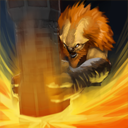 Echo Slam
Echo Slam or
 Epicenter
Epicenter, or your team as a whole packs a lot of magical firepower.
Debuff the enemy team early in the fight when you're still learning to use this item, or when you're effectively carrying it for the team rather than yourself. The 20 second duration is pretty generous. As you get more advanced and can handle reasonably complex initiations like
 Epicenter
Epicenter +
 Blink Dagger
Blink Dagger +
 Veil of Discord
Veil of Discord + Burrow Strike you might want to wait until you actually go in.
Veil also offers some nice tankability and intelligence gain.
 Vladmir's Offering
Vladmir's Offering
 Ease of Building: Fair
Ease of Building: Fair
Game Stage: Any
Another upgrade from
 Ring of Basilius
Ring of Basilius, Vlad's can be built with many different intents in mind. First of all,
it offers a non-unique-attack-modifier way of getting lifesteal, at least for melee heroes (
 Helm of the Dominator
Helm of the Dominator does not), and secondly it offers a range of strong bonuses to nearby allies.
It's easy to argue that Vlad's is so good that it's well worth having one per team no matter what -
the damage and armour auras are very strong. More people take the view that it's worth getting if your team has a melee carry without lifesteal - a support can get this and allow their carry to move straight on to damage items.
It's also a core item on heroes who have mana regeneration needs that line up nicely with some lifesteal, like
 Slark
Slark for example.
Farming
Farming tools have one primary purpose - they're an investment to help you gain more gold and experience, faster.
While all damage boosting items technically boost your farming speed, these items have particular abilities or effects that help you do it even faster. They all offer a least some minimal bonuses in other areas too.
These items are usually picked up by Carries (especially hard carries) who are more interested in farming than fighting, trying to get up and running as fast as possible. Some carries, e.g.  Shadow Fiend already have good farming abilities and simple need the mana regen to allow continuous use.
Shadow Fiend already have good farming abilities and simple need the mana regen to allow continuous use.
It's generally a very BAD idea to pickup these kinds of items when your team is likely to or is struggling against the enemy early-mid game - they are often not particularly effective in combat compared to other similarly priced items. Farming items are an investment, and take time to pay off.
Farming items can also be a bad idea if you're outcarried by the enemy team and the time spent farming will benefit them more than you.
If you are thinking of going for a farming item there are several things you need to consider first:
- Is it early enough in the game to be effective? (10-20 minutes is the usual cut-off for buying one for most players, after this it's usually too late)
- Can the rest of the team hold out while you AFK farm for a while?
- Do you outcarry the enemy team?
If the answer to any of these questions is NO, you should strongly considering getting items that will let you fight now, rather than investing in a farming item.
 Battle Fury
Battle Fury
 Ease of Building: Moderate
Ease of Building: Moderate
Game Stage: Early-Mid
This item
ONLY WORKS FOR MELEE CARRY HEROES. While ranged heroes still benefit from the stats and regen, they lose the cleave attack that is the real point of BF.
 Battle Fury
Battle Fury allows you to quickly rip through big groups of enemies - reaping the rewards and swiftly moving on. The regeneration also allows you to tank up the damage from pretty much any creep or neutral without a problem.
It suits heroes who want to boost their raw damage more than their attack speed (usually agility heroes who will already have this covered from their primary stat, or heroes with big crit passives).
 Hand of Midas
Hand of Midas
 Ease of Building: Fair
Ease of Building: Fair
Game Stage: Early
The cheapest of the items in this list, Midas allows to periodically harvest a neutral or enemy creep - granting an automatic bounty of 190 gold, and 3x the experience the creep would normally be worth.
This means you can focus on trying to maximise your gold or xp income - even the smallest jungle creeps are now worth 190 gold...or you could maximise your levelling by culling the largest available creep.
Most players choose to maximise their levelling.
With it's 100 second cooldown,
 Hand of Midas
Hand of Midas has a definite break even point, where the initial investment you made is paid back.
On pure money terms this is ~17 minutes after purchase, although the extra xp advantage and attack speed mean it's probably a little sooner than this.
Midas commits you to a longer farming game, usually in the jungle, and the trade off depends on whether you could or should be getting more levels by killing enemy heroes.
It does have some utility against heroes like  Chen and
Chen and  Enchantress as you can use it to instakill their jungle creeps
Enchantress as you can use it to instakill their jungle creeps.
 Maelstrom
Maelstrom
 Ease of Building: Fair
Ease of Building: Fair
Game Stage: Early-Mid
Although primarily a farming tool, it's much easier to argue that
this is also a proper damage item to help you carry. While the lightning procs, damage and attack speed are all useful in a fight, this item offers no direct stats which is why it's more suited for farming.
However, it doesn't offer the regeneration of
 Battle Fury
Battle Fury, and relies on attack speed rather than sheer damage to do it's job - which is why many heroes suit one more than the other.
Remember that this item DOES count as a unique attack modifier, and will override any other UAMs whenever it procs.
 Maelstrom
Maelstrom is fairly easy to build, with the most expensive part being the
 Mithril Hammer
Mithril Hammer at a mere 1600 gold. Later on you can upgrade it to
 Mjollnir
Mjollnir fairly easily...
 Mjollnir
Mjollnir
 Ease of Building: Moderate
Ease of Building: Moderate
Game Stage: Mid
The upgraded version of
 Maelstrom
Maelstrom, this item boosts your attack speed substantially, while also offering a lightning shield that can damage enemy heroes who attack you or an ally that you've cast it on.
 Mjollnir
Mjollnir allows you to farm even faster, with the attack speed and slightly increased lightning damage boosting the number of procs that you get. If you get
 Maelstrom
Maelstrom, it's generally a no-brainer to want to upgrade it fully.
This item most suits heroes who have some kind of passive % based chance of triggering a special attack when they right click - e.g. Bash or 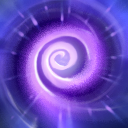 Time Lock
Time Lock.
 Radiance
Radiance
 Ease of Building: Difficult
Ease of Building: Difficult
Game Stage: Early-Mid
This is probably one of the most difficult items to get in the timeframe that you need it.
You either get it before 20 minutes, or not at all for most heroes. It has a fixed burn damage amount that is incredibly effective early-mid game, but loses a lot of it's impact as the game goes later.
It's always useful as a farming and pushing tool though, rapidly burning away the health of every nearby neutral or enemy unit - you can literally wander through the jungle and the creeps will come to you!
 Radiance
Radiance is very hero as well as time-specific - generally it favours heroes who:
- Have multiple illusions who will share the radiance effect (e.g.
 Phantom Lancer
Phantom Lancer or
 Naga Siren
Naga Siren)
- Are very tanky or otherwise difficult to kill and chase well (e.g. Doom Bringer or
 Weaver
Weaver)
Attack and Defence
This section includes a number of slightly difficult to place items that don't fit squarely into being either pure damage items or defensive items, but some combination of the two.
Generally they offer a particular stat rather than a straight damage bonus, so most of these items only fit with specific hero types.  Assault Cuirass is an exception, working on almost everyone with a half decent right click.
Assault Cuirass is an exception, working on almost everyone with a half decent right click.
 Butterfly
Butterfly
 Ease of Building: Hard
Ease of Building: Hard
Game Stage: Late
An excellent item for
AGILITY carries only, this items offers an excellent damage increase, and also offers some
protection from physical damage with added evasion and armour.
Be aware that the evasion does NOT stack with any dodge skill you may have, other than Backtrack (cos, y'know, it's not very good anyway... :)).
It is not normally rushed as that evasion isn't too important until enemy carries start getting big - at that point, combined with the armour increase
you're reducing physical damage against you by about 40%, on average.
 Butterfly is countered by
Butterfly is countered by  Monkey King Bar
Monkey King Bar - the true strike ignores evasion and makes your item much less effective.
 Sange
Sange
 Ease of Building: Fair
Ease of Building: Fair
Game Stage: Mid
 Sange
Sange is a good ganking and fighting item - giving each of your attacks the chance to slow an enemy's movement speed by 20%. This scales nicely through the game, although it does rely on you having sufficient attack speed to make it reliable.
Although theoretically it can work as an escape, it's simply not reliable enough to work when you need it.
It is generally favoured by strength heroes, but it can work for any semi-carry or carry who needs damage and to bulk out their HP a little.
It can be built into either
 Sange and Yasha
Sange and Yasha or
 Heaven's Halberd
Heaven's Halberd.
 Yasha
Yasha
 Ease of Building: Fair
Ease of Building: Fair
Game Stage: Mid
The agility version of
 Sange
Sange,
 Yasha
Yasha offers a very useful 10% boost to your movement speed instead. This is most favoured by melee heroes who need to close quickly, but is also useful for ranged heroes who can use it for chasing and escaping - like
 Razor
Razor.
Again this is an item only really for heroes who are interested in right-click damage, support heroes would be much better off with a
 Eul's Scepter of Divinity
Eul's Scepter of Divinity or
 Drum of Endurance
Drum of Endurance if they want to boost their movement speed.
Later on this can be built into either
 Sange and Yasha
Sange and Yasha or
 Manta Style
Manta Style.
 Sange and Yasha
Sange and Yasha
 Ease of Building: Moderate
Ease of Building: Moderate
Game Stage: Mid
A combination of the two swords listed above, giving you the attributes of both (plus a very small bonus) in a single inventory slot.
 Sange and Yasha
Sange and Yasha is like a crazy old uncle who only gets to come out of the cellar occasionally -
it's not a commonly seen item as it's simply inferior to many similarly priced items as the game goes late.
However, it does have a redeeming feature that should make it more worthy of consideration -
you can "upgrade" S+Y into a  Manta Style and
Manta Style and  Heaven's Halberd
Heaven's Halberd by disassembling it and then using the swords to make the two more useful late game items.
 Manta Style
Manta Style
 Ease of Building: Hard
Ease of Building: Hard
Game Stage: Mid / Late
Although it favours agility heroes,
 Manta Style is considered a good item on just about any carry
Manta Style is considered a good item on just about any carry. It offers all the bonuses of
 Yasha
Yasha, but most importantly allows you to summon two illusions of yourself - causing extra damage, confusion, and sharing many of the bonuses and passives your main hero possesses.
On a sufficiently farmed hero, these two illusions can be more dangerous than some support heroes, and also allow you to attack bases without putting yourself at risk. However, don't buy this as your first big item as otherwise your illusions will be a bit lacklustre.
Manta also gives you a very small window of invulnerability when you activate it, allowing you to completely dodge certain attacks and skills - although the timings on this can be tricky. Using your Manta can also purge a variety of debuffs from your hero.
 Assault Cuirass
Assault Cuirass
 Ease of Building: Hard
Ease of Building: Hard
Game Stage: Any
This really was about the most difficult item to place in a category - to some people it's a defensive item, to some offensive, team or utility. It's actually something of all these things, but it ended up here because ultimately it's best worn by a carry who can benefit most from the increased armour and attack speed.
It does offer a team bonus, improving the armour and attack speed (to a lesser degree than the main carrier) of all nearby allied units, and reducing the armour of all nearby enemies - yes, both of those include creeps. This makes for a fantastic team fight and pushing item, giving your team a decisive edge in battle.
Be aware however that
it's aura does NOT stack with either itself, or with the armour aura from Vlad's, RoB, etc.
So you definitely do not want more than one  Assault Cuirass per team
Assault Cuirass per team.
It is generally prefered by strength carries who need the extra attack speed and armour (they don't get it from their main stat like agility heroes), and especially by heroes with a passive bash skill.
Attack Damage
This is a collection of items that add directly to your attack damage directly, regardless of your primary stat. Remember that your total damage output (DPS or Damage Per Second) is dependent on your attack speed too. For this reason, agility heroes tend to benefit the most as the game progresses (agility gain boosts attack speed).
I've decided to group them together because they all exist to improve your right-click attack, albeit in different ways, and work to some degree on all carry heroes.
 Armlet of Mordiggian
Armlet of Mordiggian
 Ease of Building: Fair
Ease of Building: Fair
Game Stage: Early-Mid
One of my favourite items in DOTA, Armlet makes for an incredibly effective early-mid game damage boost, and can still hold it's own later on. Although it can benefit a lot of carries or semi-carries, it most benefits strength heroes who gain even more damage from it's active mode.
Armlet is something of a double edged sword however - while boosting your damage and tankability, it also drains your health while active. This can't actually kill you, but does mean that it requires careful management - at least until you get sufficient lifesteal or health regeneration to go with it.
Activating and deactivating your armlet also has some interesting effects - it works on absolute health rather than a % like most items. So turning it off means you instantly lose about 500 hp, turning it on, the opposite - even if you have 1 HP, toggling it can get you back up to a decent amount instantly. Again, this health loss cannot actually kill you.
 Crystalys
Crystalys
 Ease of Building: Fair
Ease of Building: Fair
Game Stage: Mid / Late
A cheap and effective item for increasing your damage potential. However there are a few important points to note:
- It relies on having both good attack speed AND damage to be truly worthwhile (it needs to proc frequently and have enough base damage to make the crit worthwhile).
- It has limited stacking ability with itself and crit causing passives, which rarely make it worth getting under those circumstances.
As you can see, you already need pretty good right-click damage to make this worthwhile, so you'll rarely see it on heroes other than carries. Sometimes semi-carry heroes like Windrunner can benefit due to abilities that temporarily boost their attack speed.
It builds into a
 Daedalus
Daedalus which will further boost your damage potential.
 Daedalus
Daedalus
 Ease of Building: Hard
Ease of Building: Hard
Game Stage: Late
The big brother of
 Crystalys
Crystalys, this item can kick out some serious criticals when combined with some good attack speed. Most of the comments that apply to Crystalys apply to
 Daedalus
Daedalus too - you need to have sufficient base damage and attack speed already in order to make this item worthwhile - although there are a few exceptions.
For example,
 Kunkka
Kunkka's
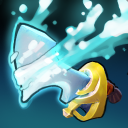 Tidebringer
Tidebringer AOE attack combined with that 25% chance of a 2.7x critical from
 Daedalus
Daedalus - you can potentially melt most of a team in a single hit.
 Daedalus
Daedalus is a reasonably easy upgrade to
 Crystalys
Crystalys considering it's high total cost, and if the situation was right to buy that, it's probably right to go ahead and buy the upgrade too.
 Monkey King Bar
Monkey King Bar
 Ease of Building: Hard
Ease of Building: Hard
Game Stage: Late
Another big damage item, the MKB also boasts two addition effects. The first one is true strike - this
prevents your attacks from being dodged by any evasion based skill or item, including
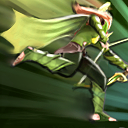 Windrun
Windrun, but excluding Backtrack). It also means ranged heroes can attack uphill without a chance of missing.
This makes it a natural choice against the likes of
 Phantom Assassin
Phantom Assassin,
 Brewmaster
Brewmaster, Windrunner, or any hero with a
 Butterfly
Butterfly or
 Heaven's Halberd
Heaven's Halberd.
The second effect is that MKB has a minibash - this is a very brief stun, but still enough to break channelling spells and be annoying. This has a high chance of proc'ing, but really benefits from attack speed, which can constant be interrupting enemies attacks.
 Divine Rapier
Divine Rapier
 Ease of Building: Hard
Ease of Building: Hard
Game Stage: Late
The
 Divine Rapier
Divine Rapier is a massively powerful weapon, easily the most dangerous in the game - unfortunately it can also be massively dangerous to your own team. If you die while holding it, and nearby hero can pick it up and wield it instead - including enemies! Losing a 700 gold
 Gem of True Sight
Gem of True Sight to the enemy team is annoying and costly...losing a 6200 gold
 Divine Rapier
Divine Rapier can be suicide.
Basically there is a right time and a wrong time to buy a
 Divine Rapier
Divine Rapier:
The RIGHT time is when your team is behind, outcarried and with hope fading that you can make a comeback. Buying a Rapier is basically a massive gamble that throws all the cards up into the air to land where they will. Ideally you want an
 Aegis of the Immortal
Aegis of the Immortal or powers like
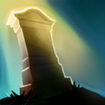 Reincarnation
Reincarnation as backup.
If you can win that one vital fight where they're not expecting you to wield 300 extra damage, it might just be enough to turn things around. A heroic victory snatched from the jaws of defeat. Either that or they beat you up, put your head down to toilet for a few flushes, steal it, and then stomp you...but hey that was going to happen anyway, right?
The WRONG time is when your team is easily winning a game - "but Sando it's fun", they said, "watch me troll the enemy team with my carry
 Crystal Maiden
Crystal Maiden?". Yep, it's all fun and games until the enemy team focus that hero and nick it, only to make an amazing comeback and spend the next 20 minutes hanging around your fountain looking for easy kills. Who's laughing now? It's not you, your mouth's full of toilet water - and that could just be from your own team...
Defensive
Defensive items are all designed to keep you alive and fighting, either by boosting your health points, armour or blocking magic attacks.
Armour gives you % based protection against PHYSICAL damage - i.e. right clicks and some hero abilities. Good armour increases your EHP or "Effective Hit Points", with 50% armour you essentially have DOUBLE your amount of hit points against physical attacks. Armour has NO EFFECT vs MAGICAL DAMAGE, so against teams of nukers is not a priority. PURE damage also IGNORES armour, so some heroes like  Enchantress and Outworld Devourer are not worth stacking it against.
Enchantress and Outworld Devourer are not worth stacking it against.
Magical resistance gives you % based protection against MAGICAL damage, so again effectively increases your hitpoints. There are very few items in the game that increase magic resistance, while a few offer some form of magic immunity. Bear in mind that some abilities override this immunity, and you may still suffer the stun if not the damage. Strongly consider against teams with lots of nukes and/or stun.
Hit points are something of a catch all, as they work against everything equally. However, they can be less cost effective than armour or magic resistance/immunity if the enemy team heavily favours one over the other. Strength items also increase your hit points, but only add to your damage if you're a strength hero.
 Black King Bar
Black King Bar
 Ease of Building: Moderate
Ease of Building: Moderate
Game Stage: Any
BKB offers immunity to most spells and abilities while active, with both the duration and cooldown decreasing every time it's used. It is a common item choice amongst some support heroes as well as carries.
Generally it's considered a
core item on any hero who has an important channelling spell - e.g.
 Enigma
Enigma's
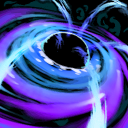 Black Hole
Black Hole. Most other heroes who can afford one will consider getting it depending on the composition of the enemy team - if they have a lot of nukes and disables then they'll generally try to get it sooner or later.
BKB can be rushed if you're against a particularly strong nuking/disabling team, and retains it's usefulness throughout the game. It also offers a boost to strength and damage, which is a useful combination for pretty much any hero.
 Linken's Sphere
Linken's Sphere
 Ease of Building: Difficult
Ease of Building: Difficult
Game Stage: Any
Considerably more expensive than
 Black King Bar
Black King Bar, Linken's is more situational or specific to certain heroes. Instead of offering a limited duration of blanket magic immunity,
it will block one directly targeted spell every 20 seconds.
The advantages of this are that
it works passively and doesn't rely on your reactions or judgement to work. It can also block certain spells that would go through
 Black King Bar
Black King Bar's protection. The disadvantage is that it cannot block more than one spell at a time, and also offers no protection against abilities that are AOE or targeted at the ground.
Linken's also offers considerably more in the way of stats than BKB, including a lot of regeneration.
For these reasons, Linken's tends to be picked up mostly by hit-and-run type heroes like
 Weaver
Weaver or
 Queen of Pain
Queen of Pain, where that protection against one spell is all they need to get away.
 Blade Mail
Blade Mail
 Ease of Building: Fair
Ease of Building: Fair
Game Stage: Any
An excellent all-round item, this seemed the most natural place for it - it's almost aggressively defensive,
inflicting any damage you receive while it's active on the enemy that dealt it. This can be useful to stop enemies from wanting to attack you or aggressively seeking out damage so you can return it.
The biggest caveat for BM is that you need a decent sized health pool to get the most out of it - your maximum HP is the most damage it can possibly inflict, and may well be split over several enemy heroes.
It works extremely well against heroes who are either glass cannons (high damage, low hitpoints) like
 Sniper
Sniper or
 Riki
Riki, or have limited control over their damage once they have used a particular ability, e.g.
 Death Prophet
Death Prophet or
 Sand King
Sand King.
It's an extremely cost effective item, granting additional stats bonuses as well as the active on just the cost of the components.
 Ghost Scepter
Ghost Scepter
 Ease of Building: Fair
Ease of Building: Fair
Game Stage: Late
An underused item, it's generally a preferred choice for squishy support heroes who are getting ripped apart by farmed up carries.
It offers 4 seconds of immunity from any physical damage, at the price of making you 40% more vulnerable to magical damage and unable to right-click attack. This is usually enough to make a carry stop focusing you in a team fight, but can go badly wrong if the enemy team has strong magical damage.
Scepter also offers some nice cheap stats, giving
+7 to all attributes - very nice for a support hero!
Although I've put it down as a late game item, it can be worth considering midgame if the opposition have a hero like
 Juggernaut
Juggernaut, as it protects against his ultimate.
 Soul Booster
Soul Booster
 Ease of Building: Moderate
Ease of Building: Moderate
Game Stage: Early-Mid / Mid
A very useful way of bulking out your health and mana pools, this item is the fusion of the three different kinds of Booster, with the added benefit of regeneration thrown in for free.
For the cost, you get far more HP/Mana than you would from a stats item...but
without the stats you don't get the damage bonus for your primary attribute either. This is why this item is favoured by casters - they're more interested in staying alive and being able to use their spells a lot than in right click damage.
 Bloodstone
Bloodstone
 Ease of Building: Difficult
Ease of Building: Difficult
Game Stage: Mid / Late
Built on top of a
 Soul Booster
Soul Booster, this item adds considerably more regeneration, as well as some interesting effects if your hero dies.
Bloodstones carry a number of charges that are collected any time an enemy hero dies in a large radius around you.
Each charge adds to your mana regeneration, but more importantly, reduces your respawn time by 4 seconds. In the late game this reduced respawn time can be game changing, as well as saving your substantial amounts of money on buybacks.
For example, if you were level 20 with 15 charges in your
 Bloodstone
Bloodstone you would respawn in 20 seconds instead of 80.
You can even respawn instantly if you have more charges than levels.
Finally, when you die, any nearby allied heroes will be healed for a fair number of HP, and you will also gain any experience for enemy deaths in that area until you respawn.
 Vanguard
Vanguard
 Ease of Building: Fair
Ease of Building: Fair
Game Stage: Early-Mid
A useful defensive item, combining a block, regeneration and some extra health in a single item.
 Vanguard
Vanguard is useful as it basically allows you to tank up pretty much any non-hero (or Roshan) damage with very little risk, and also greatly increases your survivability in the early-mid game.
It is generally recommended for melee heroes for the increased damage block, although you will occasionally see it on ranged heroes too.
The biggest issue with  Vanguard is that it cannot be upgraded, and doesn't scale particularly well into the late game
Vanguard is that it cannot be upgraded, and doesn't scale particularly well into the late game. The damage block becomes fairly redundant, and it uses up an inventory slot that could be filled with something bigger and better.
The question most players ask themself when considering a
 Vanguard
Vanguard is, how much longer would it take me to get a
 Heart of Tarrasque
Heart of Tarrasque instead? If you need this early-mid game and can't wait - get it - otherwise it might be better to aim higher.
 Heart of Tarrasque
Heart of Tarrasque
 Ease of Building: Difficult
Ease of Building: Difficult
Game Stage: Late
Heart is an incredible defensive item, adding masses of health to your pool and incredible regeneration when you're not being attacked.
The regeneration is also based on your maxiumum HP, so scales extremely well as the game continues.
Heart most suits strength heroes as they also receive 40 damage as part of the stats package, and most are naturally tanky anyway. However, Heart is very rarely a bad item on any hero, at any time. The only real issue is that
carries need to ensure they can inflict damage as well as take it, so may need to delay this item until this is resolved.
The most difficult part of buying a heart is getting the 3200 gold
 Reaver
Reaver.
 Shiva's Guard
Shiva's Guard
 Ease of Building: Difficult
Ease of Building: Difficult
Game Stage: Late
This was a very difficult item to place, as it offers a range of different uses depending on which type of hero buys it. However, most folks buy it with defence in mind, so this seems the best place to put it.
The first thing to bear in mind is that Shiva's provides a lot of intelligence and armour - this is most useful for intel carries, but is also handy for tanks. Rare tanky intel heroes like
 Death Prophet
Death Prophet,
 Dark Seer
Dark Seer or
 Ogre Magi
Ogre Magi suit this item extremely well.
Aside from the nuke/slow (the damage is usually almost incidental by the time you get this item), the main effect of Shiva's is the aura that reduces attack speed for all nearby enemies - that's the real power of this item.
Unique Attack Modifier
Unique Attack Modifiers provide some kind of special effect when you use your right click attack ( Orb of Venom,
Orb of Venom,  Maelstrom and
Maelstrom and  Mjollnir are also UAMs), as do some hero abilities.
Mjollnir are also UAMs), as do some hero abilities.
Only one of these Modifiers can be active on any attack, so you rarely want to buy more than one of these items in the same game. Also be aware of how specific items interact with particular skills your hero may have (such as 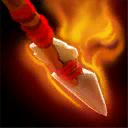 Burning Spear and
Burning Spear and 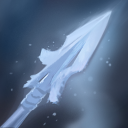 Frost Arrows).
Frost Arrows).
There's a lot of complex rules about what order you buy the items in, whether they always proc, whether you use specific hero skills together with them - the easiest way of dealing with this is simply have ONE UAM at any time! If you buy an  Orb of Venom early game, sell it when you buy your
Orb of Venom early game, sell it when you buy your  Diffusal Blade...
Diffusal Blade...
You can get a full explanation here.
 Desolator
Desolator
 Ease of Building: Moderate
Ease of Building: Moderate
Game Stage: Any
Probably the most commonly picked UAM/orb,
 Desolator
Desolator is both reliable and effective. First of all it adds a good chunk to your base damage, and secondly it strips 6 armour away from the target for 15 seconds, making them more vulnerable to all physical damage.
The exact effect of that armour reduction is difficult to quantify - it varies depending on how much the target currently has.
As a general rule, the less armour the target has to start with, the more effective the  Desolator orb will be
Desolator orb will be. The minimum effect is about 5% extra damage, the maximum about 30%,
with about +20% being "the norm".
 Desolator
Desolator also works against buildings, so is a good choice for well farmed pushers who want to be able to take a tower or barracks down quickly, although it works well on any carry.
Be aware that
the effect DOES NOT STACK - it simply renews the timer with each attack. Therefore you don't particularly want more than one
 Desolator
Desolator per team. Theoretically you could get it on ranged heroes and try to set the effect on each enemy hero in turn - however, in a real fight it's often more important to simply focus the most dangerous enemy.
 Diffusal Blade
Diffusal Blade
 Ease of Building: Moderate
Ease of Building: Moderate
Game Stage: Mid
An excellent Orb for agility heroes (the stats mean it's a poor choice on others), it's a good choice against teams with a lot of mana dependent heroes. It adds a mana burn effect to every attack, reducing their pool and adding bonus damage.
It's active effect is Purge.
This is useful as a ganking tool as it slows your opponent and removes any buffs they are currently benefiting from. Even more useful is it's effect against
summoned units and illusions, which are killed instantly. This is devastating for heroes like
 Warlock
Warlock who's Golum can be insta-killed.
You only get so many charges for Purge however, although they are reset to 8 when you buy the 2nd receipe to upgrade your Diffusal. This means you may run out eventually, and the limited scaling of mana burn means that this item can be outclassed in the late game - it's probably worth keeping once you've bought it however.
 Eye of Skadi
Eye of Skadi
 Ease of Building: Hard
Ease of Building: Hard
Game Stage: Any
An expensive and rarely seen item,
 Eye of Skadi
Eye of Skadi is still an incredibly effective and well rounded item. It offers a whole lot of stats that are useful to any carry, but
the main attraction is the attack and movement slow that it offers. This makes it very useful for both fighting and ganking. As it is % based, it scales nicely into the late game.
Although the effect duration is reduced for ranged heroes, this is rarely a problem and it can be used effectively by either attack type.
The only issue with
 Eye of Skadi
Eye of Skadi (other than the cost) is that it doesn't offer as much raw damage as some similarly priced items, with it filling more of a role of anti-carry/ganking item than out and out hitting power.
 Mask of Madness
Mask of Madness
 Ease of Building: Fair
Ease of Building: Fair
Game Stage: Early-Mid
A risky but interesting item,
 Mask of Madness
Mask of Madness's UAM gives you 17% lifesteal on each auto-attack, however this is not much more than a
 Morbid Mask
Morbid Mask, so why spend an extra 1000 gold?
MoM's active gives you a massive boost to movement and attack speed, but at the cost of making you 30% more vulnerable to damage. This is a very risky move, even for tanky heroes - however it does have various uses:
-
No fight back. If you're ganking a weaker hero, they'll try and run instead of fight, this lets you out run them and kill them faster. It can also work well on heroes who have a passive bash skill - by stacking enough attack speed you can perma-stun your opponent and stop them fighting back.
-
Jungling speed. Once you've got reasonable damage, you'll get that health back anyway from the lifesteal.
-
A slightly risky escape, 30% extra movement speed could well let you outrun your pursuers. (of course, 30% extra damage means you're screwed if they do catch you)
Unfortunately there's no upgrade path like there is for HoTD below.
 Helm of the Dominator
Helm of the Dominator
 Ease of Building: Fair
Ease of Building: Fair
Game Stage: Any
HoTD is a cheap and useful UAM that's popular with a variety of carry heroes. It's main effect is to add 15% lifesteal to your attacks, allowing you to sustain in the jungle and survive fights you would have otherwise lost. You need sufficient right click damage to make this pay off, so only carries need apply.
There's a big attraction in lifesteal for carries - the more damage you can do, the more life you steal, and the more likely you are to survive. However, you will generally want a
 Black King Bar
Black King Bar for these heroes too, as disabled = not attacking, not attacking = not healing.
Be aware that you don't necessarily need to complete
 Helm of the Dominator
Helm of the Dominator straight away, just a
 Morbid Mask
Morbid Mask can do much the same job for a while.
Also be aware that HoTD gives you the ability to convert and control an enemy or neutral creep. This can be handy for all sorts of useful purposes - scouting, stacking and the auras from some neutral creeps.
 Satanic
Satanic
 Ease of Building: Hard
Ease of Building: Hard
Game Stage: Late
An upgrade to
 Helm of the Dominator
Helm of the Dominator,
 Satanic
Satanic is a frighteningly expensive piece of kit. It's certainly not a necessary or automatic upgrade to the Helm (it costs about 3x as much), but can be a good luxury choice once you've completed other important items such as
 Black King Bar
Black King Bar and another damage item.
 Satanic
Satanic doesn't actually add much damage unless you're a strength hero,
if anything it's more of a survival/defensive item. It adds a chunk of hit points, boosts the passive lifesteal to 25%, and has a defensive active ability.
Unholy Rage gives you 3.5 seconds of 175% lifesteal (!), meaning that if you have good DPS output you can be taking a kicking but have your health going up rather than down.
It's vitally important that you use this correctly - otherwise you just wasted about 4k gold :-P.
You almost always want to combine Unholy Rage with magic immunity, and only use it when you're under serious threat -
you simply can't afford to waste this by not being able to attack someone!
Misc
This section is for the few items that don't fit neatly with most of the others, each has quite different uses.
 Aghanim's Scepter
Aghanim's Scepter
 Ease of Building: Moderate
Ease of Building: Moderate
Game Stage: Mid
The effect of
 Aghanim's Scepter
Aghanim's Scepter is different or non-existent on each hero, and I could easily fill another guide just with talking about that. It offers a nice bunch of general stat increases, but is generally poor value for money unless it has a big effect on your ultimate. It's also rarely bought by carries as they need to focus on their right click damage instead.
Most heroes start by buying a
 Point Booster
Point Booster (incredibly useful for the cost), and then buy whichever piece will give them a damage boost from their stats, bulk out their HP or whatever they need most right now.
You really need to read up on individual heroes to figure out if they need a scepter or not, but I'll take you through the general rules:
1) Are you playing as the team's main carry this game? If so, forget the scepter.
2) Does the Scepter improve your ultimate at all? If not, forget it.
3) Is your ultimate a nuke? If so, a scepter is usually very valuable early game, but not worth going after later on.
4) Does the scepter massively decrease the cooldown on your ultimate? It's usually worth getting in these cases.
5) Is the scepter upgrade so good that your hero will always want it? Well that answers itself really...
 Ethereal Blade
Ethereal Blade
 Ease of Building: Hard
Ease of Building: Hard
Game Stage: Mid / Late
The E-Blade is rarely seen in most games, as it's expensive and very borderline for the majority of heroes. The most commonly seen use is "Shotgun Morph" (
 Morphling
Morphling) - he's an agility hero who can pump up his primary attribute even further to allow him to inflict massive instant damage with this item.
Occasionally you might see it on other heroes who have a very high primary stat gain (e.g.
 Pudge
Pudge, Doombringer,
 Phantom Lancer
Phantom Lancer...or even
 Lina
Lina!), and ideally a nuke or two they can follow up with - it's pretty rare though, you need a ton of early farm to make this work.
Dagon
 Ease of Building: Moderate
Ease of Building: Moderate
Game Stage: Early-Mid
Our final much maligned item, Dagon is normally seen as the preserve of kill stealers and trolls.
You have to get one early on if it's going to be effective (like all nukes, it runs out of effectiveness as the game goes on), and really
you need to be using a burst damage hero to get the most of it.
The idea is very simple - Dagon adds another 400 damage to your existing nukes, and between them all you have enough to instantly melt an enemy hero. This can work very effectively for the likes of
 Nyx Assassin
Nyx Assassin,
 Tiny
Tiny,
 Lion
Lion,
 Lina
Lina or
 Tinker
Tinker.
Generally speaking, you don't want to upgrade your Dagon further as you may a lot of cash for a very minimal amount of extra damage and stats. The only situation this might be wise is where that 100 extra damage is enough to net you another kill you wouldn't have gotten otherwise...but this is still highly debatable.
 Refresher Orb
Refresher Orb
 Ease of Building: Hard
Ease of Building: Hard
Game Stage: Late
Another fantastically expensive item,
 Refresher Orb
Refresher Orb is an absolute dream on a few select heroes. While adding some reasonably good damage and regeneration,
 Refresher Orb
Refresher Orb is very rarely used by carries due to the cost versus stats gained - occasionally you might see one on Outworld Devourer or an extremely well farmed
 Faceless Void
Faceless Void.
It's much more common on support heroes with big ultimates with long cooldowns - the likes of
 Enigma
Enigma or
 Tidehunter
Tidehunter. For them, being able to use their ultimate twice in one fight, or once every minute or so, is a huge benefit to them and their team.
The secret to getting the most out of  Refresher Orb is to try to sync up the respective cooldowns to suit you as much as possible
Refresher Orb is to try to sync up the respective cooldowns to suit you as much as possible. Don't use the RO if the cooldown on your ultimate is nearly finished (unless its a massive emergency) - having both available is great. Once you've used your ultimate, refresh as soon as possible to get the RO cooldown going.
The first fight when you use your  Refresher Orb is usually the best opportunity for it to make a really decisive difference
Refresher Orb is usually the best opportunity for it to make a really decisive difference - the enemy team has probably got used to dealing with your ultimate once and has some kind of plan in place. This is where you can really catch them with their pants down, so try not to let them see you on the map if you can help it.


































































































Quick Comment (35) View Comments
You need to log in before commenting.